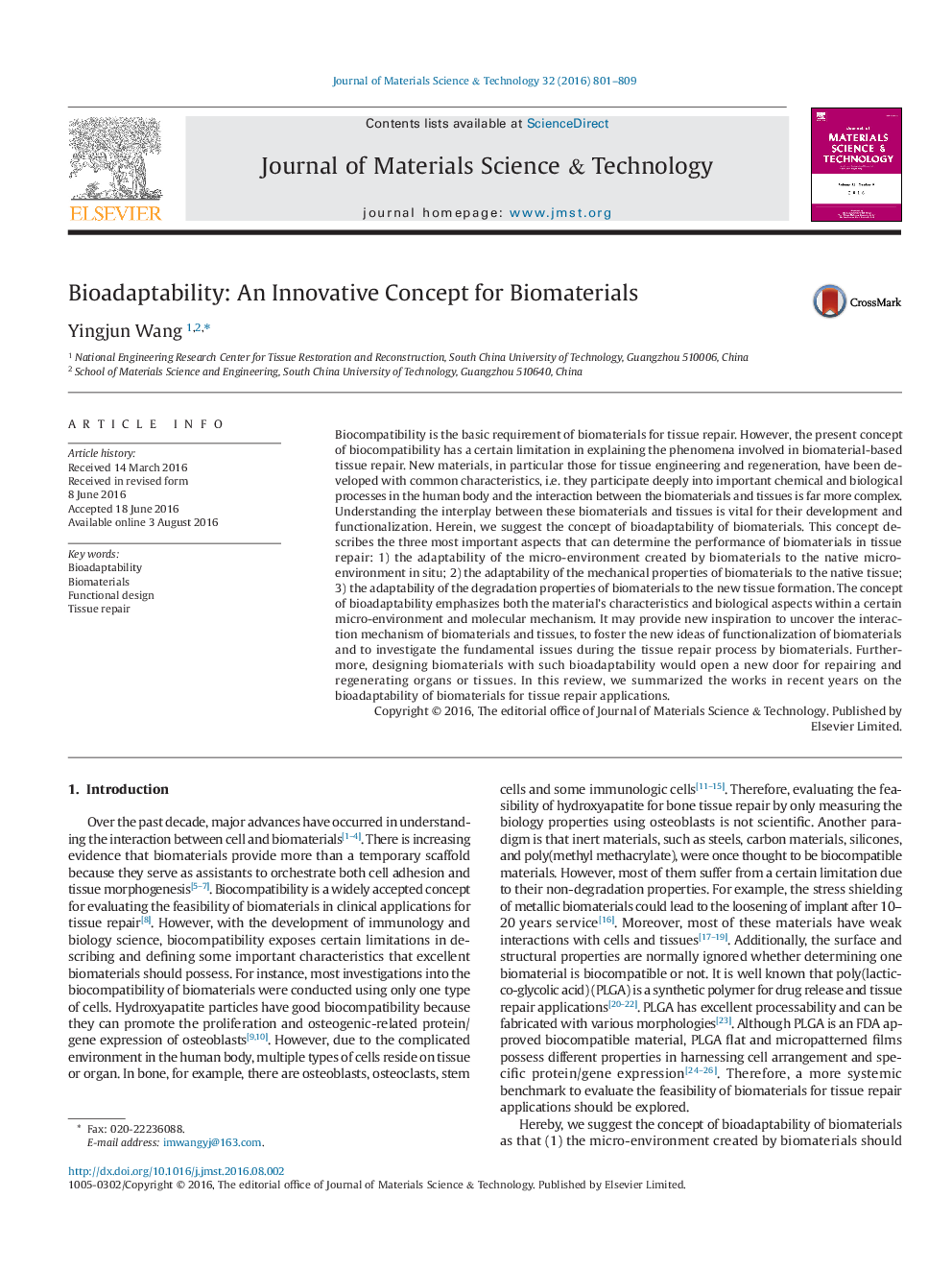| Article ID | Journal | Published Year | Pages | File Type |
|---|---|---|---|---|
| 1555717 | Journal of Materials Science & Technology | 2016 | 9 Pages |
Biocompatibility is the basic requirement of biomaterials for tissue repair. However, the present concept of biocompatibility has a certain limitation in explaining the phenomena involved in biomaterial-based tissue repair. New materials, in particular those for tissue engineering and regeneration, have been developed with common characteristics, i.e. they participate deeply into important chemical and biological processes in the human body and the interaction between the biomaterials and tissues is far more complex. Understanding the interplay between these biomaterials and tissues is vital for their development and functionalization. Herein, we suggest the concept of bioadaptability of biomaterials. This concept describes the three most important aspects that can determine the performance of biomaterials in tissue repair: 1) the adaptability of the micro-environment created by biomaterials to the native micro-environment in situ; 2) the adaptability of the mechanical properties of biomaterials to the native tissue; 3) the adaptability of the degradation properties of biomaterials to the new tissue formation. The concept of bioadaptability emphasizes both the material's characteristics and biological aspects within a certain micro-environment and molecular mechanism. It may provide new inspiration to uncover the interaction mechanism of biomaterials and tissues, to foster the new ideas of functionalization of biomaterials and to investigate the fundamental issues during the tissue repair process by biomaterials. Furthermore, designing biomaterials with such bioadaptability would open a new door for repairing and regenerating organs or tissues. In this review, we summarized the works in recent years on the bioadaptability of biomaterials for tissue repair applications.
